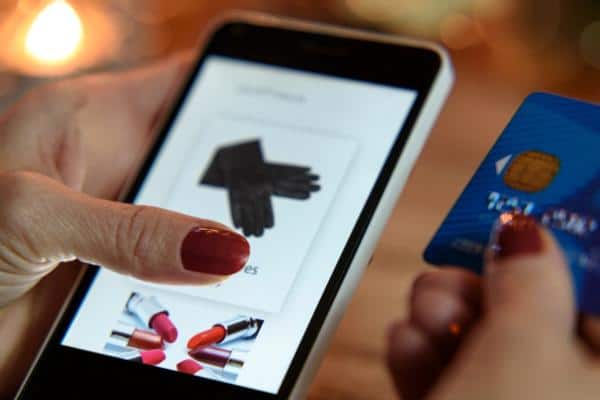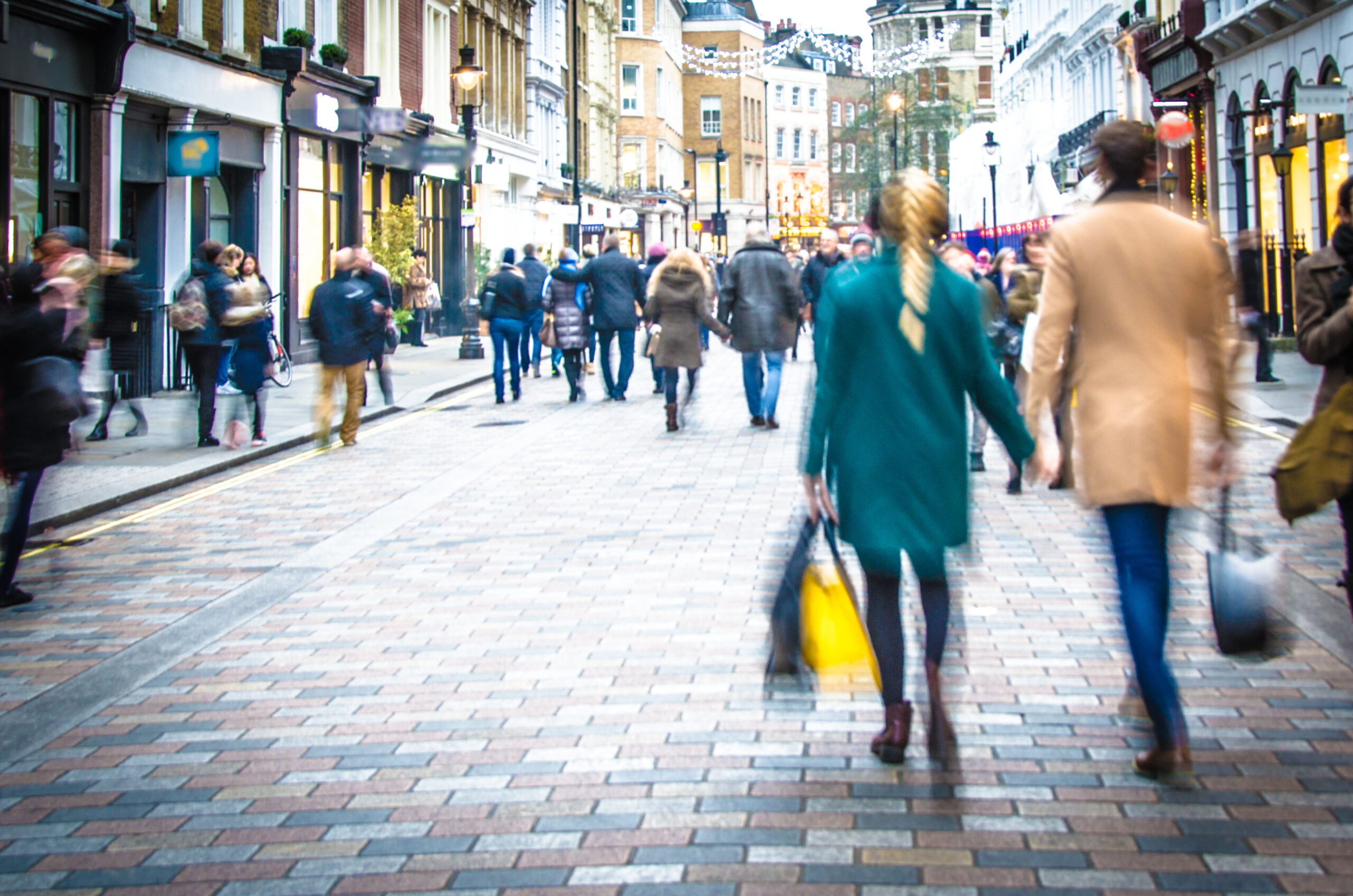In 2022, shoppers in markets across Europe are buying online regularly, with fashion and homewares among the most popular items bought. They tend to use smartphones, to value sustainability and to pay for premium subscriptions, according to RetailX research, which questioned more than 8,000 shoppers in 17 European markets including the UK, Italy, France, Germany, the Netherlands and Poland. Here are some of the key findings.
How often do customers buy online?
Some 47% of UK respondents said they shop online more than once a week, while 8% said they bought more than once a day. Only 0.7% said they bought online less than once a year, while a slightly larger proportion (1.2%) had never bought online. In many markets, however, the largest group are those who buy online more than once a month, with 44% doing so in Italy, 42% in Germany, 41% in Poland, 40% in France and Spain and 39% in the Netherlands. In all those markets, the second largest group are those who shop online more than once a week – 32% in the Netherlands, 31% in France and Spain, 30% in Poland and 28% in Italy. A relatively small proportion never buy online, with France among the highest at 2.7%. For those who don’t buy online it tends to be simply because they like buying from shops, although a third (33%) of Spanish respondents were concerned about security.
What do they buy?
Shoppers in the UK are most likely to say they have bought groceries online in the last year, cited by 62% of respondents, followed by fashion clothing or accessories (61%), cosmetics or beauty products (52%), flowers or gifts (46%) or homewares (44%). In Poland, however, shoppers primarily buy fashion clothing or accessories (64%) and cosmetics and beauty products (48%), and consumer electronics (48%). In Germany, the most popular items to buy online include music, film and TV products (78%), sports and fitness items (54%), electronics (58%), hobby-related products (52%) and fashion (50%). Fashion (52%) is most often bought by shoppers in the Netherlands, followed by hobby-related products (48%). Fashion remains at the top in France (72%), followed by homewares (48%), and in Italy 61% have bought fashion and 50% homewares in the prior year. In Spain, 72% have bought fashion items followed, some way after, by homewares (50%) and consumer electronics (46%).
The items that UK shoppers prefer to buy online rather than in-store or between the two include music, film and TV products (72%), consumer electronics (61%), books (60%) and fashion (53%). Shoppers in Italy prefer to buy music, film and TV products (73%) nutrition supplements (63%) and books (61%) online rather than in-store or between the two. Music, film and TV products are also the items that Polish (72%), Dutch (67%), German (78%), Spanish (61.5%) and French (56%) respondents prefer to buy online.
How do shoppers buy online?
UK shoppers were most likely to use a smartphone to buy online, with 73% doing so most or all of the time. Laptops (37%) were the next most popular option, followed by tablets (30%)
desktop computers (28%). As yet smart TVs (21%) and smart speakers (20%) seem to be still emerging as a shopping technology. Customers were also most likely to use smartphones to buy either all or most of the time in Italy (70%), France (79%), Poland (73.5%), Germany (69%), Spain (67%), and the Netherlands (63%). Laptops were the second most often used option in all markets followed, in third place, by desktop computers in key markets outside the UK.
The largest group of UK shoppers had ordered online for home delivery, followed by ordering online for collection from a store or pick-up point, which were both equally popular. In Italy, Spain and the other key markets, home delivery was the most popular option, followed by picking up from a collection point.
Why do they buy online?
Across Europe, cheaper prices – named by 45% of respondents – are the single most important factor that encourages shoppers to buy online rather than in-store. That’s followed by direct delivery to the home (44%) and time saving (38%).
UK shoppers are most likely to prefer buying online than in-store for the convenience home delivery (47%), followed by cheaper prices (42%) and saving time (39%). Health risks were only cited as a top three reason by 7% of respondents, suggesting the fear of Covid-19 has now subsided. In Italy, low prices were the most important (50%), followed by home delivery (46%), while saving time was a priority for French respondents (44%), followed by home delivery and lower prices (40%). Cheaper prices were a priority for more than half of Polish (55%) and German (49%) respondents, but home delivery was a priority for Spanish retailers (44%) and in the Netherlands, saving time was ranked as top priority (41%).
Asked to say how important different factors were when buying online, 94% of UK respondents said product availability was very or somewhat important. Also very or somewhat important to UK shoppers were getting the lowest price (92%), the speed of delivery (92%) and getting the lowest price (92%). Findings were similar in all of the key markets of Italy, France, Spain, Germany the Netherlands and Poland.
What makes a difference when buying online?
More than half of respondents in the UK (57%), Spain (69%), Germany, Poland (both 63%), Italy (60%), France (59%), said that they pay for a subscription to a premium shopping service.
Of those that did so in the UK, free delivery was the most commonly cited benefit (72%), followed by speedy delivery (62%). That’s similar in the other key markets studied. In Spain, for example, free delivery (75%) is the most common benefit followed by fast delivery (71%).
Less than half of UK respondents said they had bought through social media sites (43%), with Facebook the most common location (57%), followed by Instagram (53%). That pattern is similar across the main markets. In Italy, for example, a third (33%) have bought via social media, of which 60% of purchases were through Facebook, and 30% through Instagram. But in France, 43% had bought via social, and those that had were most likely to do so through Instagram (58%).
Next-day delivery was said to be important for most purchases by shoppers in the UK (38%) and Italy (41%).
Sustainability was important for the 72% of UK respondents who agreed or strongly agreed that retailers should be ecologically sustainable, an opinion shared most strongly in Germany (83%), Italy (79%), Spain (74%) France (74%), Poland (70%) and perhaps less strongly in the Netherlands (53%).
In the UK, 84% said they wanted retailers and their suppliers to have fair workplace and welfare standards, as did 82% in Spain, 84% in Poland, 71% in the Netherlands, 78% in France, 81% in Italy and 87% in Germany. More than half said they would pay more for products made and transported in ways that did not harm the environment in the UK (55%), Italy (64%), France (58%), Germany (76%), Poland (61%) and Spain (60.5%) – but only 45% of respondents in the Netherlands said they would do so.
And 56% of UK respondents found online reviews very helpful, as did respondents in markets including Italy (58%) and Germany (52%). In Poland most shoppers research online before making a major purchase (58%), while all respondents in the Netherlands said they preferred to use their phone to do that research.
Looking ahead
Most shoppers expect to continue buying across sales channels in a similar way that they do currently in the UK (63%), Italy (64%), France (67%), Germany (69%), the Netherlands (61%) and Spain (60.5%). Just over half agree with the statement in Poland (50.3%).
Of those that expect to see a change, more expect to spend more online and less in stores. That’s true in markets from Poland (37%), Italy (29%) and Spain (31%) to the UK (25%), France (19%), and Germany (20.5%) France was the market – among the key markets singled out here – in which the largest group of people planned to shop more in store and less online (15%).
This feature first appeared in the RetailX Top1000 Europe, available to download here.









